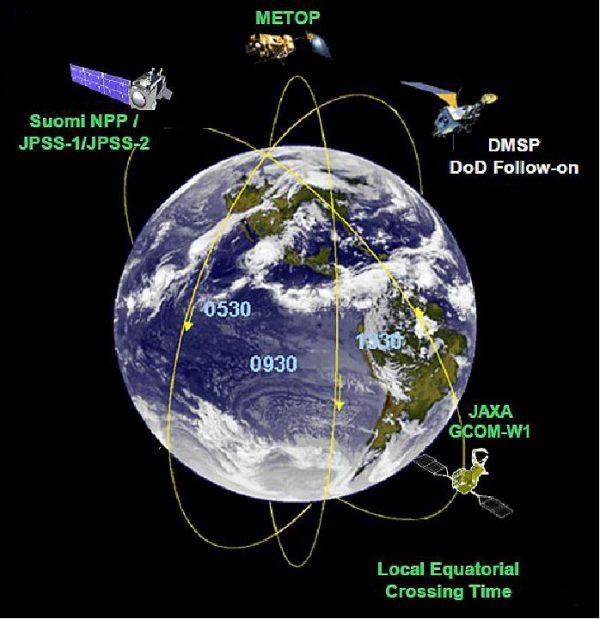"There is, then, no water that is wholly of the Pacific, or wholly of the Atlantic, or of the Indian or the Antarctic. The surf that we find exhilarating at Virginia Beach or at La Jolla today may have lapped at the base of antarctic icebergs or sparkled in the Mediterranean sun, years ago, before it moved through dark and unseen waterways to the place we find it now. It is by the deep, hidden currents that the oceans are made one." -Rachel Carson
Later this year, one of the most epic Earth-monitoring missions of all time, the NASA/NOAA collaboration JPSS-1, will launch. With a suite of five unique scientific instruments designed to improve and enhance climate and weather monitoring, it will be a tremendous asset in disaster prevention and mitigation. It will give full global coverage twice per day, on a continuous basis, with the JPSS program designed to run for the next 21 years, at least.
 JPSS implements US civil commitment inter-agency and international agreements to afford a 3-orbit global coverage. Image credit: NASA / NOAA.
JPSS implements US civil commitment inter-agency and international agreements to afford a 3-orbit global coverage. Image credit: NASA / NOAA.
But that will only happen if we continue to fund Earth science and to value Earth monitoring. From coastal areas to wildfires to hurricanes to storms at sea and so much more, humanity relies on an intricate knowledge of what’s occurring on our world for our safety, security, and our economic and commercial endeavors. It’s incredibly exciting that JPSS is slated to launch in just a few months, but if we’re not careful, it might be the pinnacle of human achievement, in this arena, for decades to come.


@Ethan wrote:
Why?
Don't get me wrong, the JPSS pair will provide some great data. It is a definite upgrade over the current POES series, but what does NASA Earth Sciences really add?
The chassis itself was designed by Northrup Grumman for the NPOESS project. Most of the sensors you touted were actually designed by either Boeing, Raytheon, or Ball Aerospace. Ball is also the one assembling the bird.
NOAA is more than capable of managing a project like this as they do have a number of satellites currently flying that had no NASA involvement. The only real contribution I see here that NASA Earth Sciences made was to split the expenditures with NOAA so as to camouflage the true cost of the total project.
Do we really need to spend so much money for buildings (in ridiculously expensive Manhattan?!?!) and all the rest of the organizational overhead if they're nothing but a spending loophole? I think not. Good riddance NASA Earth Sciences. That Manhattan rent money would be better spent on actual science. Maybe then we could afford JPSS-2.
"That Manhattan rent money would be better spent on actual science."
And we see the type of comment by science ignoramuses (Denier must be the poster child of that group, as empty as his understanding and overpowering as his predetermined denial is) that make cuts to science programs so loved by the right: rather than attacking the substance they dishonestly direct to fake arguments about costs.